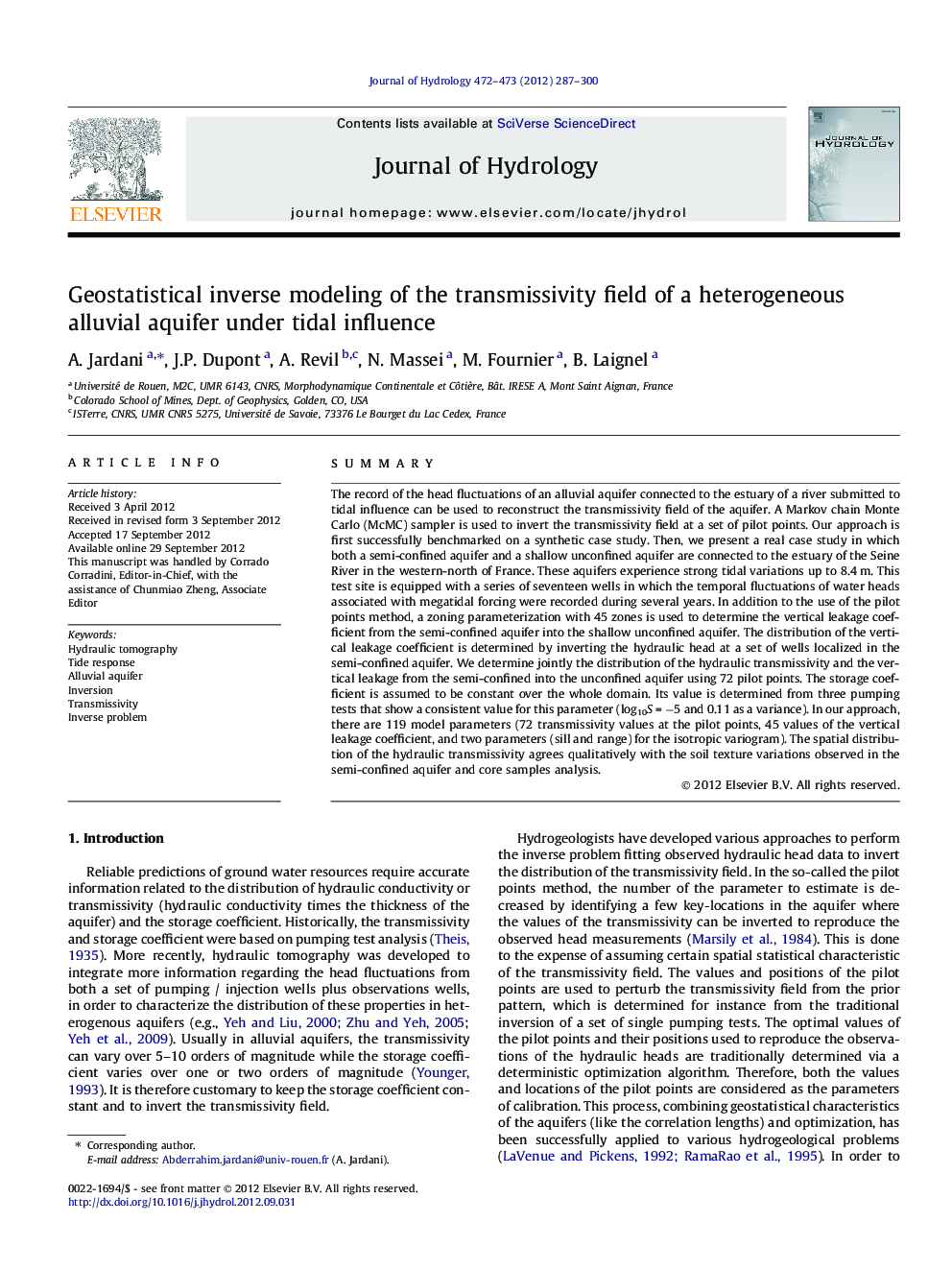| Article ID | Journal | Published Year | Pages | File Type |
|---|---|---|---|---|
| 4576517 | Journal of Hydrology | 2012 | 14 Pages |
SummaryThe record of the head fluctuations of an alluvial aquifer connected to the estuary of a river submitted to tidal influence can be used to reconstruct the transmissivity field of the aquifer. A Markov chain Monte Carlo (McMC) sampler is used to invert the transmissivity field at a set of pilot points. Our approach is first successfully benchmarked on a synthetic case study. Then, we present a real case study in which both a semi-confined aquifer and a shallow unconfined aquifer are connected to the estuary of the Seine River in the western-north of France. These aquifers experience strong tidal variations up to 8.4 m. This test site is equipped with a series of seventeen wells in which the temporal fluctuations of water heads associated with megatidal forcing were recorded during several years. In addition to the use of the pilot points method, a zoning parameterization with 45 zones is used to determine the vertical leakage coefficient from the semi-confined aquifer into the shallow unconfined aquifer. The distribution of the vertical leakage coefficient is determined by inverting the hydraulic head at a set of wells localized in the semi-confined aquifer. We determine jointly the distribution of the hydraulic transmissivity and the vertical leakage from the semi-confined into the unconfined aquifer using 72 pilot points. The storage coefficient is assumed to be constant over the whole domain. Its value is determined from three pumping tests that show a consistent value for this parameter (log10S = −5 and 0.11 as a variance). In our approach, there are 119 model parameters (72 transmissivity values at the pilot points, 45 values of the vertical leakage coefficient, and two parameters (sill and range) for the isotropic variogram). The spatial distribution of the hydraulic transmissivity agrees qualitatively with the soil texture variations observed in the semi-confined aquifer and core samples analysis.
► The effect of tidal force is used to estimate transmissivity. ► The inversion is developed into a stochastic framework. ► The new approach is tested with both synthetic and real data.
